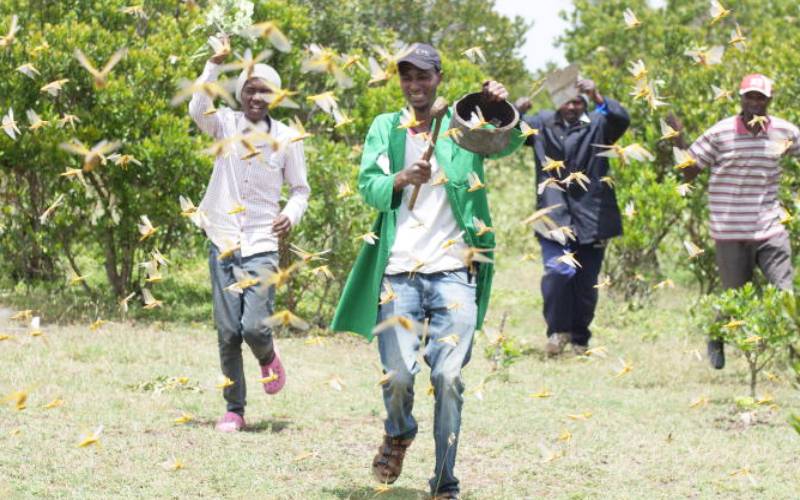×
The Standard e-Paper
Home To Bold Columnists

Residents of Mahiga-Meru village chase desert locusts using old aluminium cooking pots, iron sheets and twigs. [Dominic Kirui, Reuters]
After desert locusts invaded her farm in central Kenya, Mary Muthoni, 61, ran around her maize fields shouting and banging on an old iron sheet in a desperate attempt to drive them away.